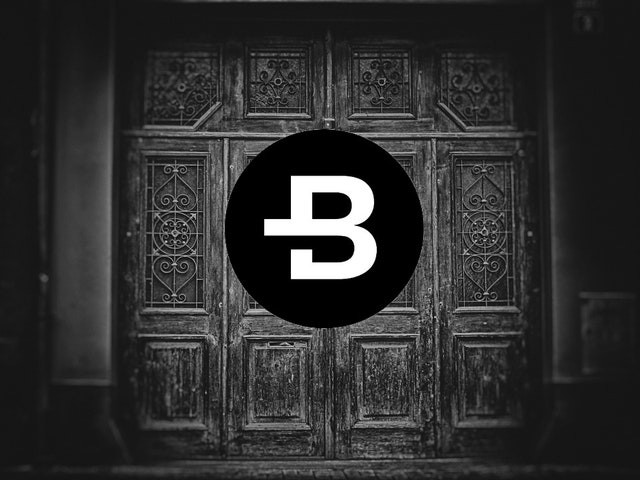Times are changing quickly, and the need for online privacy and anonymity is becoming increasingly important. With countries run by oppressive governments that default to censorship, the need for privacy remains crucial.
Bytecoin, a decentralized cryptocurrency that focuses heavily on privacy and security, can be used to send and receive monetary value while ensuring the transaction remains untraceable by third parties. By utilizing a privacy-oriented protocol that is powered by the use of ring signatures, Bytecoin has proved its ability to send value in the form of transactions globally while remaining under the radar.
What Does Bytecoin Do?
To get a better understanding of what Bytecoin does and how it operates in comparison to Bitcoin, here is a chart that shows the similarities and differences between Bytecoin and Bitcoin.

Clearly, despite their similar names, Bitcoin and Bytecoin have a few key differences. Bytecoin is the first coin to implement the CryptoNote protocol which powers the Bytecoin infrastructure.
A recurring mistake that people make is assuming that Bitcoin transactions, whether sent or received, are truly untraceable. Bitcoin uses the blockchain, an immutable public ledger where all transactions are visible, showing sent and received outputs and inputs. This means that all transactions can be traced back to either a specific sender or receiver. Although this only provides a Bitcoin public address and might not seem to have much significance, there have been cases where it’s been possible to reveal who owns which Bitcoin address.
Blockchain technology verifies transactions by placing them into a block which gets appended to an immutable blockchain, meaning it cannot be altered. All transactions and metadata related to a transaction on the Bitcoin blockchain remain public, from the very first block up until the most recent one. This is where Bytecoin differs greatly.
Bytecoin operates by using the cryptographic protocol known as CryptoNote, which sets the foundation for Bytecoin and its forked coins, such as Monero. This technology ensures that transactions made by entities remain private and untraceable, without risk of a third party performing transaction analysis to determine sender and receiver.
Although transactions that occur on the Bytecoin network appear on its blockchain, the transactions remain completely anonymous in that addresses cannot be viewed by any entity.
Untraceable Ring Signatures
Bytecoin, through the use of its protocol, carries untraceable properties that allow Bytecoin transactions to occur securely on the network. This is provided through the use of ring signatures.
Ring signatures allow transactions to be mixed and untraceable. The transaction mixing process essentially allows a sender to choose several “potential” signers in a pool to establish integrity of the transaction and to ensure that every potential signer has an equal weight, meaning that an entity is unable to decipher where the funds came from.
By utilizing ring signatures, the transaction’s confidentiality and integrity is retained which in turn provides privacy for both sender and receiver. Shown below is a diagram of how the process of ring signatures works to deliver strong privacy.

Unlinkable Stealth Addresses & Transactions
Along with a substantial difference in how the CryptoNote protocol reshapes how privacy works through ring signatures, Bytecoin also incorporates a feature known as unlinkable transactions.
This feature is exactly what it sounds like: transactions that are unlinkable through the use of stealth addresses and there is no capability to scan the blockchain in hopes of revealing identities behind a transaction. Every incoming and outgoing transaction that occurs on the Bytecoin network remains masked. True identities of both sender and receiver stay hidden, ultimately allowing a high sense of privacy for the end-user.
The Bytecoin blockchain shows the cryptographic hash of its receiving address. Since each transaction utilizes a one-time public key, every transaction produced by an individual remains unlinked, making it extremely difficult to piece together multiple transactions to a single public address. The unlinkable transactions feature comes into play through the use of one-time ring signatures and stealth addresses that power the privacy behind each transaction, as mentioned previously in this article.
Proof-of-Work
Another major difference between Bytecoin and Bitcoin centers around the two cryptocurrencies’ proof-of-work algorithms. Bitcoin’s PoW (proof-of-work), which utilizes the SHA-256 algorithm, gives a big advantage to miners that have powerful ASIC mining equipment over individuals with regular GPUs and CPUs. This inherently leads to a lot of centralization, as Bitcoin can only be mined by large corporations with enough funding and energy to use these ASIC miners.
Bytecoin, on the other hand, seeks to eliminate centralization by incorporating a modified PoW algorithm, better known as Egalitarian Proof-of-Work. This modified proof-of-work consensus algorithm adapts a version of the proof-of-work algorithm that Bitcoin uses, but with added benefits for a fair, decentralized mining scheme.
The algorithm that Bytecoin uses does not have a bound on its memory, meaning regular CPUs and GPUs are able to mine the BCN coin at an effective rate while utilizing cheap hardware. GPUs have more cores than CPUs, meaning parallelization of workload (mining in this case) can be efficiently completed. This makes it fair for every user on the Bytecoin network to mine the coin and be a part of the Bytecoin ecosystem.
History of Bytecoin
Bytecoin is the very first coin to integrate the CryptoNote protocol as its foundation to provide its strong privacy features to its users.
Created in 2012, Bytecoin initially gathered a heavy presence in the Dark Web, where it was used to move funds around while users remained completely anonymous.
Bytecoin’s big dividing factor compared to other coins in the crypto market is its capacity for true anonymity and privacy provided through ring signatures and stealth addresses. The Bytecoin project split as teams diverged from the project, forking off into new cryptocurrencies.
One well-known example is Monero. Monero is a fork of Bytecoin and bases its fundamentals off the same CryptoNote protocol that Bytecoin first integrated.
The Bytecoin team remains fairly transparent, as they are a privacy-focused team. This can be seen on their community page, which shows only faces and names. Some of the names remain pseudonymous, without any link to personal details of the individual. The team working behind the scenes of the Bytecoin project can be found here.
The roadmap that Bytecoin has set out includes both the development and marketing phases for the first and second quarter of 2018. February 6, 2018 marks the first developmental phase for Bytecoin – the Public New API Beta Release. During this time, Bytecoin will enter the Asian market as development continues to progress.
The Bytecoin roadmap of the first and second quarters can be seen below.

Bytecoin Exchanges & Wallets
Bytecoin is available on a few exchanges and according to the roadmap, they will continue to add new exchanges in Q3 2018. Currently, Bytecoin can be purchased directly with Bitcoin on HitBTC and Poloniex.
There are multiple options for storing the BCN coin including a desktop wallet, an online web wallet, and a mobile wallet. The desktop wallet is available for all Windows, Linux, and Mac users, making it an easy option to store BCN in a software wallet offline and away from exchanges. This is important, as exchanges can sometimes have security issues. Since you are the sole owner of the private keys attributed to the BCN storage address, the software wallet is a great option.
The web wallet is another easy-to-use option for anyone with access to the Internet and a web browser (all web browsers work). At the time of writing, only Android users are capable of utilizing the mobile wallet for BCN storage. Further updates for the iOS release have not yet been addressed by the Bytecoin team.
Conclusion
From the beginning of 2012, Bytecoin started out as a cryptocurrency with aims to bring privacy back to the people and guarantee its users safety from malicious third parties looking to snoop on transaction activities. It remains one of the oldest projects in the crypto space, with an intention of developing a store of value while being able to transact anonymously with other users.
By being the first cryptocurrency to integrate the CryptoNote protocol, it has served as a model for other cryptocurrencies that have forked from the original Bytecoin chain, using the same technology but with different developing teams. In a world where technology continues to advance, the Bytecoin project’s visions continue to satisfy privacy needs for users around the globe.
To learn more about the Bytecoin project, check out their website and github. You can also join their community on Twitter and reddit.

